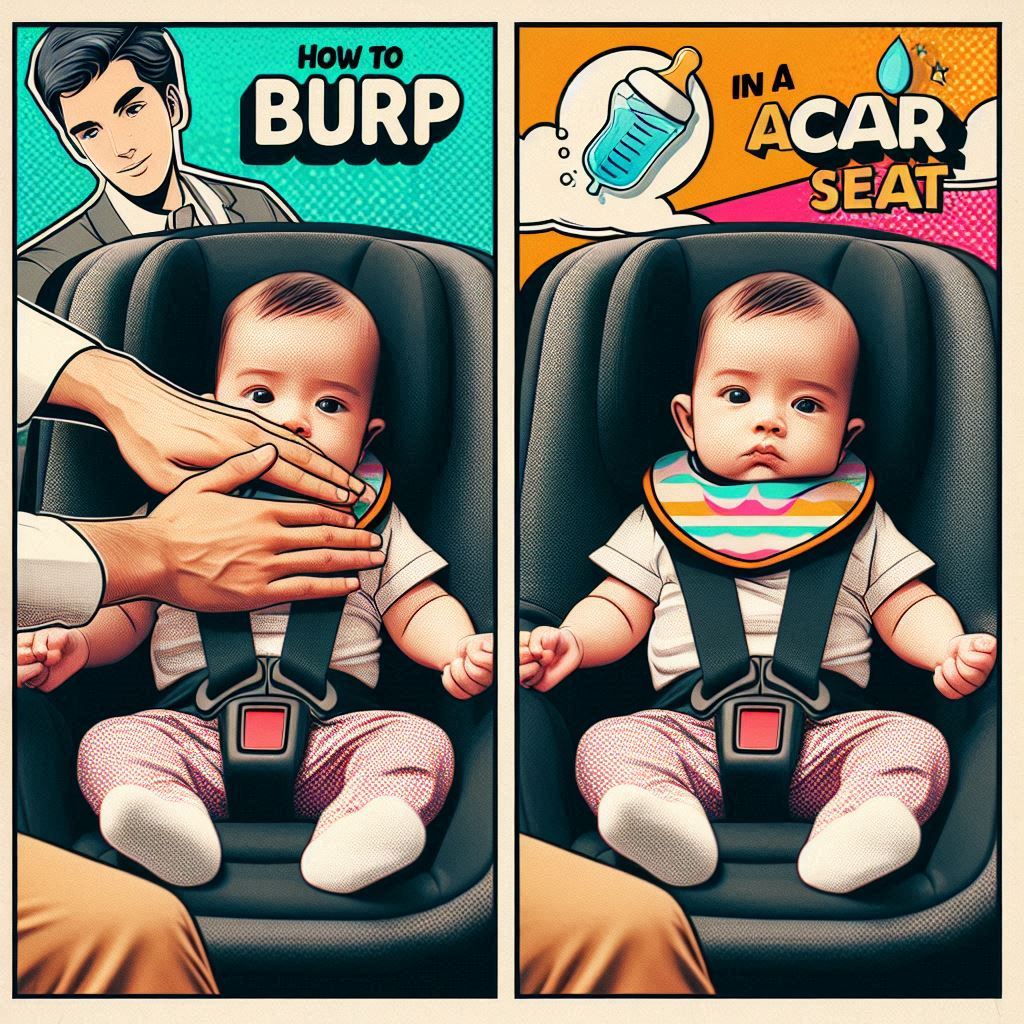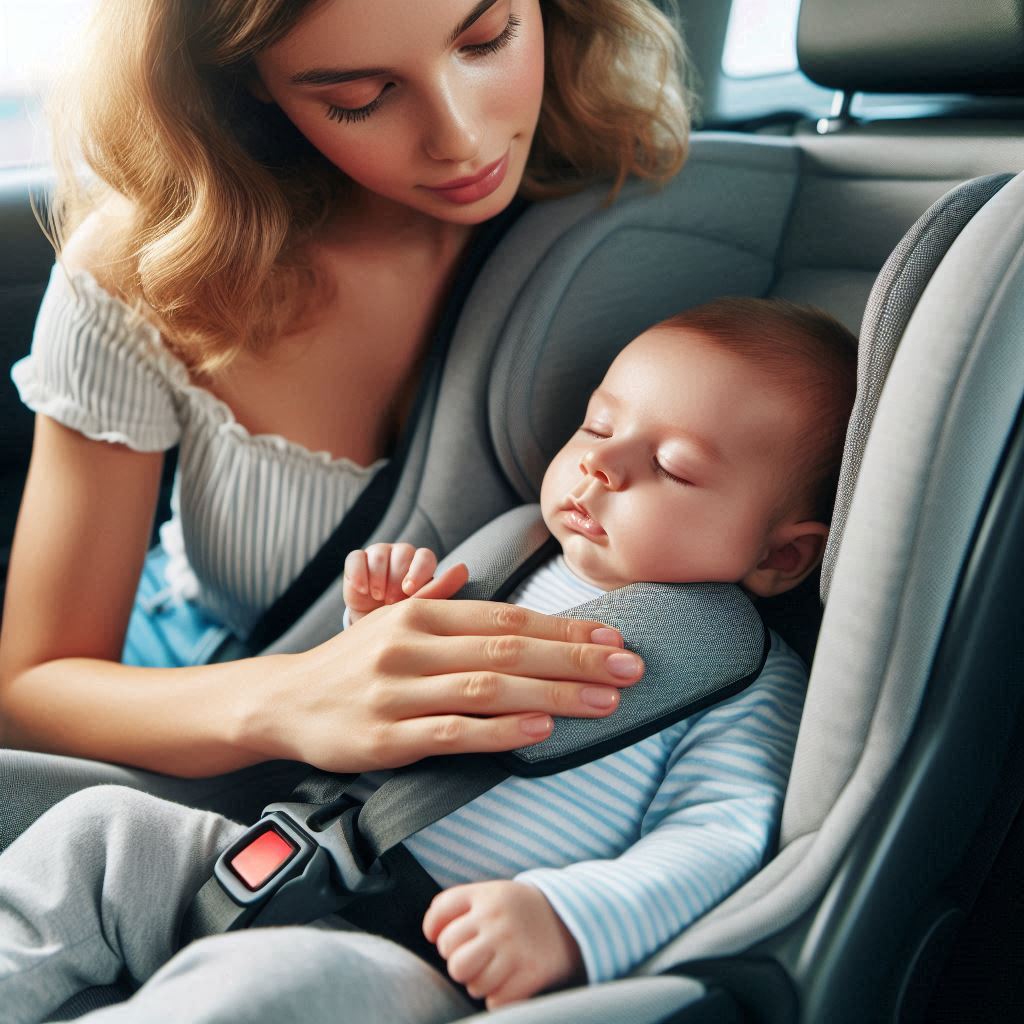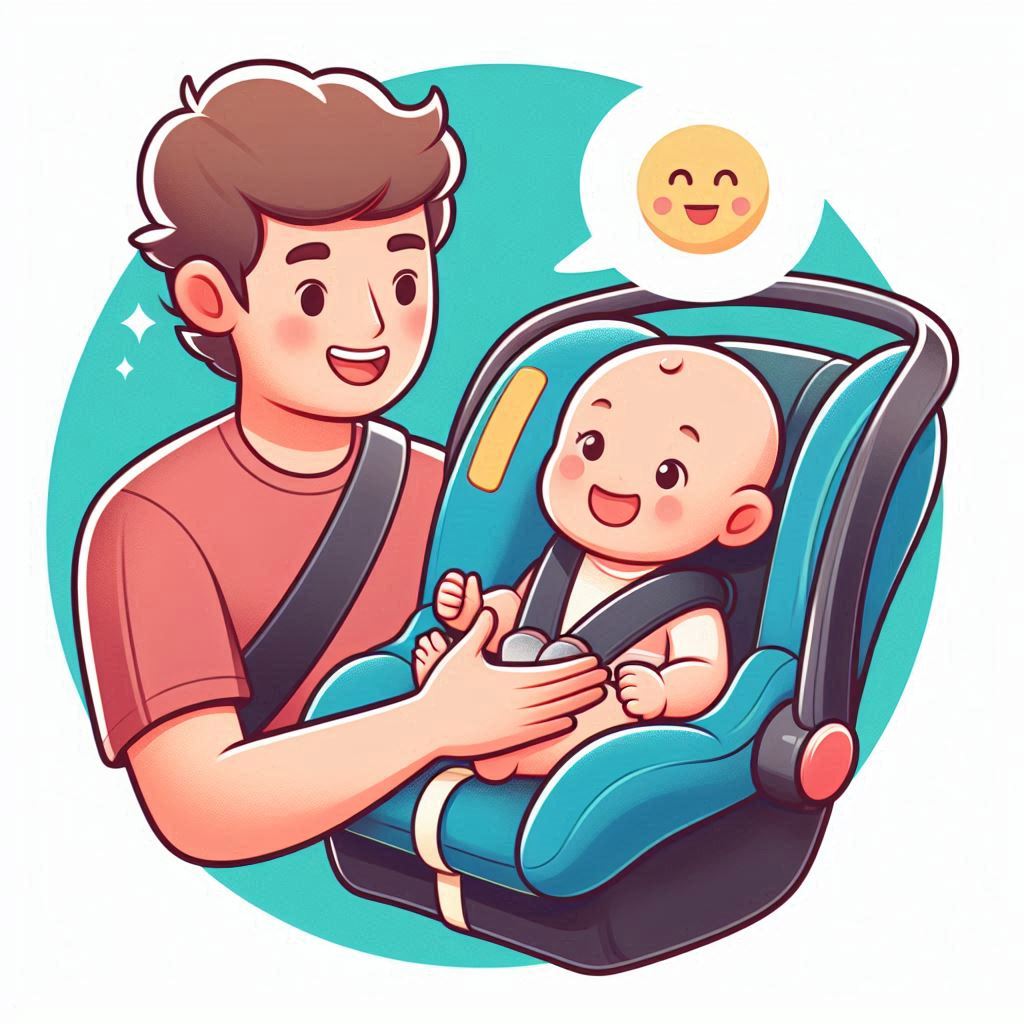How to burp a baby in a car seat

As a Certified Child Passenger Safety Technician (CPST), my primary focus is ensuring the safety of children during automobile travel. However, I understand that a frustrated infant due to trapped air can quickly disrupt a peaceful journey. Burping your baby on the go is an essential skill for parents, and while achieving this in a car seat might seem more challenging than at home, it’s definitely possible with the right techniques.
Why Burping is Important
During feeding, infants can swallow air alongside their milk. This trapped air can cause discomfort, leading to fussiness and gas. Burping helps release this air, allowing for a more comfortable feeding experience and reducing overall fussiness.
Challenges of Burping in a Car Seat
The car seat’s harness and positioning can make traditional burping methods difficult. Here’s what makes car seat burping a challenge:
- Limited Movement: The straps restrict your baby’s ability to move and wiggle, which can aid in burping.
- Positioning: Car seats keep babies at a reclined angle, which can make it harder for air bubbles to rise.
Safe and Effective Burping Techniques in a Car Seat

Safety First: Remember, your baby’s safety is always the top priority. Never take your eyes off the road while driving and ensure your car seat is installed and used correctly according to the manufacturer’s instructions. Pull over to a safe location if needed for extended burping sessions.
Here are some CPST-approved burping techniques you can try in the car seat:
- Pat-a-Back: This tried-and-true method works wonders in car seats as well. With your infant securely buckled in, gently pat their back between the shoulder blades using the palm of your hand. Experiment with different patting rhythms to find what soothes your baby most.
- Modified “Over-the-Shoulder” Burp: This classic burp position needs slight adaptation for the car seat. Unbuckle the bottom buckle only (never the chest clip!) and carefully lift your baby up and over your shoulder, supporting their head and neck. Their chin should rest on a burp cloth to catch any spit-up. Pat their back as usual, ensuring they’re secure and buckled back in promptly after burping.
- Sitting on Lap (Modified): If space allows, carefully unbuckle the chest clip and position your baby sideways across your lap, with their chest leaning slightly forward. Support their head and chin with one hand while gently patting their back with the other. Re-buckle the chest clip once it is finished.
- Slight Incline: If possible, create a slight incline in the car seat by placing a rolled-up towel or receiving blanket under their head (always ensuring their airways remain clear). This positioning can help bring the air bubble closer to the surface, making it easier to release with patting.
- Remember: Never place anything behind your baby’s back, as this can compromise the safety of the car seat.
- Chest Compressions (For Alert Babies Only): For older, more alert babies, you can try a modified version of the chest compression burp.
- Important Note: This technique should only be used on babies with good head and neck control. Place your baby on their back across your lap, supporting their head and neck with one hand. With your other hand, gently apply two or three compressions to the center of their chest, just below the breastbone. Avoid applying too much pressure.
Additional Tips for Successful Car Seat Burping
- Frequent Burp Breaks: Aim for burping breaks every 10–15 minutes during car rides, especially after feeding.
- Calming Techniques: A relaxed baby is easier to burp. Try singing, rocking gently, or talking softly before attempting to burp.
- Experiment: Every baby is different. Find the burping technique that works best for yours in the car seat.
- Consider Feeding Positions: If possible, experiment with different feeding positions (more upright) to minimize air intake during feeding.
- Burp Cloths: Placing a burp cloth between the harness and your baby can absorb any spit-up during burping and keep your car seat clean.
- Slight Head Support Adjustment (if applicable): Some car seats offer slight adjustments for head support. If yours does, consider a small incline to aid burping and potentially prevent reflux.
Maximizing Burping Success
- Frequent Burping During Feedings: Aim for burps halfway through a feeding and after finishing. Patience is key. A fussy baby can be stressful. Stay calm and try different techniques to find what works best.
Safety Considerations for Burping in a Car Seat
- Never remove your baby from the car seat while the vehicle is in motion. This poses a significant safety risk.
- Maintain a secure harness fit. Loosening the harness for burping compromises your child’s safety in the event of a crash.
- Avoid excessive tilting of the car seat. Car seats are designed for a specific angle to provide optimal protection. Tilting them excessively disrupts this safety feature.
Troubleshooting Common Burping Challenges in Car
Even with the best techniques, burping your baby in a car seat might not always go according to plan. Here’s how to address some common challenges:
- Baby Falls Asleep Before Burping: This is a frequent occurrence. If your baby seems content and isn’t showing signs of discomfort (fussiness, gas, etc.), you can let them sleep. However, if you suspect trapped air is causing distress, try gently rubbing their back or walking them around briefly while still buckled in (if it is safe to do so in a parked car).
- Persistent Fussiness After Burping: Sometimes, a burp might not be the culprit. Consider other reasons for fussiness, such as a dirty diaper, teething discomfort, or a need for a change in scenery. Pull over to a safe location and address these possibilities before continuing your journey.
- Spit-Up During Burping: This is a common occurrence, especially for younger babies. Having a burp cloth readily available will help with cleanup. If frequent spit-ups are a concern, consult your pediatrician to rule out any underlying issues.
Beyond the Car Seat: Burping Positions for Older Infants

As your infant grows and strengthens their neck muscles, you can explore alternative burping positions that might be more effective:
- Over-the-Shoulder Burp: This classic method involves placing your baby upright on your shoulder, with their chin resting on a burp cloth. Gently pat their backs between the shoulder blades.
- Sitting Upright Burp: When your baby has good head and neck control, you can try sitting them upright on your lap, supporting their head and chest with one hand while patting their back with the other.
Remember, the key is to find a technique that works best for you and your baby, prioritizing safety and comfort throughout the process.
Authentic resources for any query about your baby’s safety
- National Highway Traffic Safety Administration (NHTSA)
- Safe Kids Worldwide
- American Academy of Pediatrics (AAP)
Conclusion
Burping your baby in a car seat might require some adjustments compared to doing it at home, but with the right techniques and a focus on safety, you can achieve a comfortable and content little passenger. Remember, every baby is unique, so experiment with different burping methods to find what works best for yours. Here are some final takeaways:
- Prioritize Safety Above All Else: Never compromise your child’s safety by unbuckling them or tilting the car seat excessively.
- Be patient and persistent. Finding the right burping technique may take some time and practice. Stay calm and try different methods until you find success.
- Enjoy the Journey: A well-burped and comfortable baby makes for a more enjoyable car ride for everyone.
So, the next time you hit the road with your little one, remember these tips for a smoother and happier journey. Buckle up, stay safe, and have happy travels!
